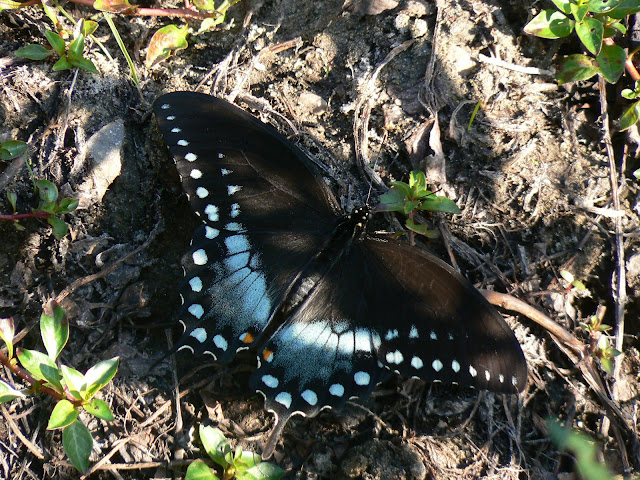Papilio troilus (Papilionidae)
The Spicebush Swallowtail may be the best known North American example of a caterpillar with eyespots. It has relatively large eyespots (e.g., in comparison to Papilio glaucus) with a flash of white inside the black pupil, which some have said makes the eye look moist or three dimensional (e.g., Wagner 2005). This species is charismatic enough to make the front cover of several books about biology including: Wagner 2005, and Rosenberg and Arp 2009. These caterpillars are not widely distributed within Canada, only entering the southern parts of Ontario (though I have heard whisperings that they are moving northward with warming climates). Instead in Eastern & Central Canada we mostly see Papilio canadensis, while South-western Canada picks up a few other species including Papilio rutulus, Papilio eurymedon, and Papilio multicaudata. Like the rest of the Papilio genus, the early instars of P. troilus caterpillars resemble bird droppings and look similar to early instar P. canadensis caterpillars (see photos in earlier posts here). P. troilus caterpillars feed on sassafras and spicebush foliage and have a strong propensity towards leaf-rolling.
Aside: Many Papilio caterpillars form silk pads on which they rest during the day. They hang on to these silk pads using little looks on their prolegs. By attaching parts of the leaf together with their silk many caterpillars - including Papilio troilus - form leaf shelters inside of which they can hide from predators.
 |
| Late instar Papilio troilus in a leaf shelter [Photo: Wikipedia.org] |
Hiding in a leaf shelter helps to hide the caterpillar, but leaf-shelters themselves are conspicuous and I have frequently observed insectivorous birds unravelling shelters in search of food. Yet, an unsuspecting bird that unravels one of these shelters would no doubt be startled but the imposing "head" thrust towards them upon entering. Their stronger propensity towards leaf-rolling (i.e., as compared to Papilio canadensis) makes me wonder if it comes as a result of the bigger eyespots. Maybe leaf-rolling evolved as a response to those bigger eyespots making the caterpillar more conspicuous.
At the end of their final instar many caterpillars, including Papilio troilus, change colour. Typically this coincides with the termination of feeding, and the initiation of the wandering phase where they search for a place to pupate. In this case, the caterpillar changes from green to an orange-brown colour, but retains the eyespots.
.jpg) |
| Late final instar Papilio troilus caterpillar [Photo: Wikipedia.org] |
At the Canadian National Collection of Insects (CNC) I was able to examine only alcohol-preserved specimens of Papilio troilus. As I mentioned in an earlier post, inflated specimens look much better. Alcohol specimens have the advantage of being protected from physical damage, moisture, and insects or mites that might eat them. Also, alcohol-preserved specimens are likely beneficial in cases where dissection is required at a later date to collect taxonomic or other types of data.
 |
| Alcohol-preserved Papilio troilus caterpillar from the CNC |
 |
| Alcohol-preserved Papilio troilus caterpillar from the CNC |
 |
| Alcohol-preserved Papilio troilus caterpillar from the CNC |
Adult: In this species, one could make the case that the adult is equally as beautiful and interesting as the caterpillar. Adult Papilio troilus butterflies are themselves mimics of a related toxic species of Papilionid butterfly, Battus philenor. B. philenor is commonly called the Pipevine Swallowtail and both the caterpillar and butterfly are toxic because they feed on pipevine.
 |
| Adult Papilio troilus [Photo: Wikipedia.org] |
 |
| Adult Battus philenor [Photo: Wikipedia.org] **Update: Check out this nice post on Papilio troilus from the Tales from the Butterfly Garden blog: http://lepcurious.blogspot.ca/2010/10/spicebush-swallowtail.html |








0 comments:
Post a Comment